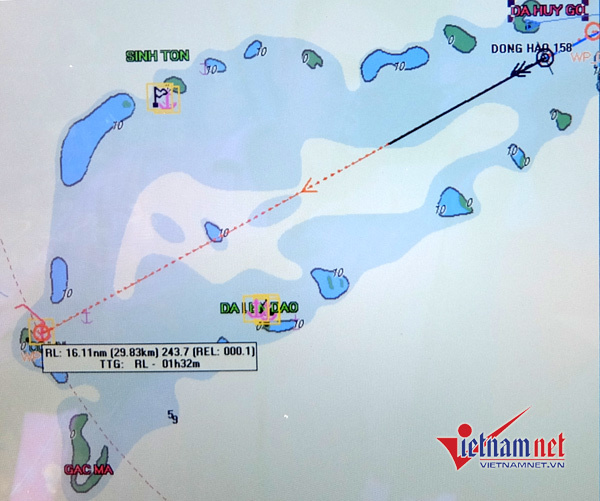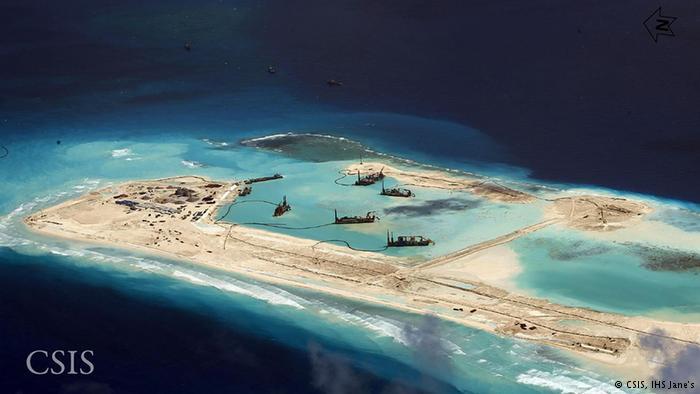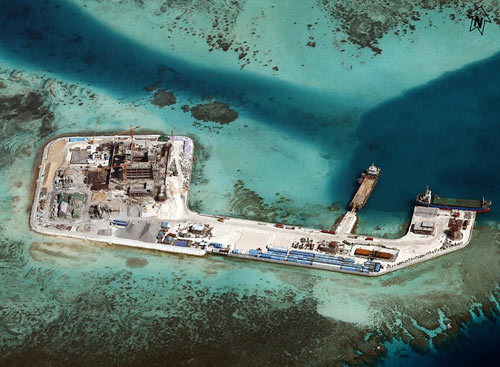VietNamNet Bridge - We are witnessing a tragedy called the political playground of major countries, especially in the East Sea (internationally known as the South China Sea). So how can small countries struggle against the power that is seeking every way to rise, with the burning hegemonic ambition.

China is emerging and accumulating national power as quickly as possible in human history. Beijing has taken hundreds of millions of Chinese out of poverty, well protected almost land borders, and built strong naval forces that can worries their biggest rival – the US.
The rise of Beijing took place with a very expensive price that could stir up the hatred of entire Asia - Pacific region and can make the region consider China as a thriving threat and increasingly aggressive force for the general status quo in the area.
History has demonstrated that when an emerging superpower challenging the status quo, the neighbors often have to suffer and endure so much. The resentment towards the superpower can grow from generation to generation. Anger becomes ingrained and widespread, that can only be solved when too much blood is shed and war, chaos covering the whole region.
Today, in Asia - Pacific, we once again witness a tragedy called the political playground of major countries, especially in the East Sea. The small countries around, with territorial claims against rocks and reefs, are put on a task that seems to be impossible: how to fight against an emerging power, with the desire to make change of the status quo.
ASEAN countries need to be vigilant. If they overact, they can cause a crisis, even turn into violence, but if they react gently, they will urge Beijing to gradually change the facts on the field, or in the East Sea conflict, creating new entities.
So what should small countries do?

Mr. Harry Kazianis, an expert on defense policy at the National Interest Center (a non-partisan, non-profit organization in the US, as a spokesman for the neo-pragmatic strategy of the US foreign policy), said that the countries that are under pressure from the Chinese need to find non-violent ways against the risk of changing the status quo by China.
He suggested a multipart plan called "shamefare", which Washington should use to put Beijing on the defensive position in the East Sea.
Part of the above strategy can also be used by the countries involving in the dispute to comprehensively expose the bullying actions that China does almost daily for its neighbors. The goal is simple: gradually and continually forcing China to feel shame on the media, especially social media. This measure in coordination with other measures can make Beijing pay a heavy and continuous price for its actions, in the hope that they will reconsider their behave.
Kazianis said that countries like Vietnam, the Philippines and other countries have very few diplomatic, economic or military tools to deter China from not taking aggressive actions in the East Sea. Meanwhile, Beijing claims sovereignty over small entities and turn them into large artificial islands with the extravaganza military infrastructure. If this continues, within a few years, China will completely dominate the East Sea.
Thus, the only way for the countries involving in the dispute with Beijing is putting pressure on other fronts, the tactics which cannot root out conflicts but can force China to pay for its action.
In particular, the claimant states should begin the process of drafting and broadcasting information on social media networks about all aggressive reactions of the Chinese vessels - including fishing vessels, marine surveillance vessels, naval vessels ... so that the international community can see the plot of Beijing.
Besides, these countries should equip their small ships with cameras to record the aggressive acts of Chinese ships in case this country uses the tactic of bullying.
In addition, the small and simple technology such as unmanned aircraft or UAV can be used to patrol and videotape the major changes in the rocks and reefs occupied by China in the East Sea, as well as the environmental damage caused by China’s actions. It is also an effective method to expose the cost of coercion strategy of China.
Let’s imagine the social influence after the social media talk about a series of incidents caused by aggressive actions of China in the East Sea, with specific images recorded for the world to see. Financial expense for this is not great but the return is likely to be very large.
How will Beijing react?

China has a simple reaction: ignoring and continuing its illegal construction activities in the East Sea and its militarization in the area. This scenario is quite clear.
However, in the Asian society, making someone "losing face" is not a small thing. China is likely to react even more aggressively, but if the actions take place at sea or in places close to the camera, they can be recorded and transmitted around the world easily. Beijing may be forced to make choices.
In fact, we know that the shame causing tactic may force Beijing to pay attention to and to reconsider its actions. When the Philippines used the legal means, which has an obvious aspect of causing shame, and brought China to the International Court relating to Scarborough shoal and the 9-dotted line, Beijing "encouraged" Manila to stop the case (of course China did not admit it).
Thus, if Vietnam and other countries involving in the East Sea dispute insists the measure of making China feel shame, through the above-mentioned strategy as well as conducting legal procedures to together bring the case to international courts, then this great pressure can put Beijing to the dock of the court of global public opinion. This is what China will not easily give up.
Duc Dan